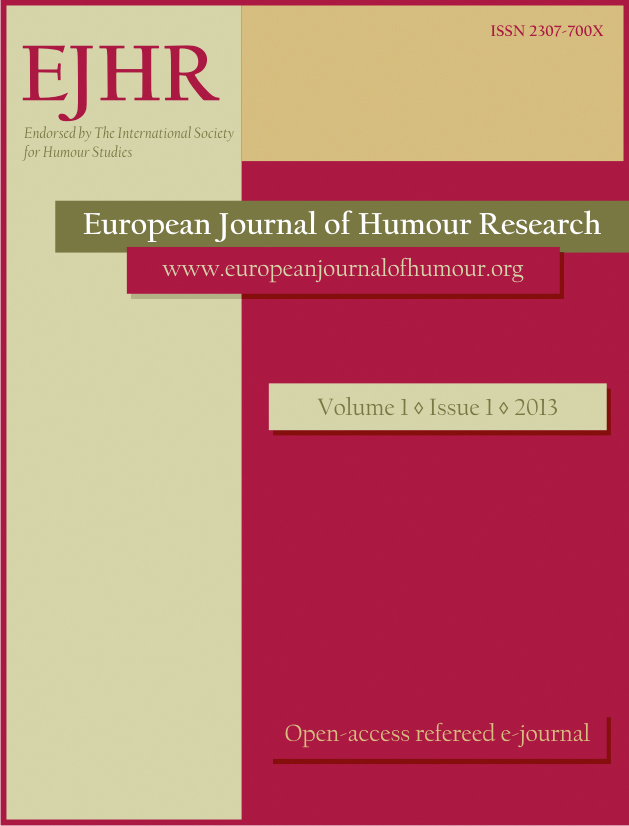Investigating facial features of four types of laughter in historic illustrations
Investigating facial features of four types of laughter in historic illustrations
Author(s): Willibald Ruch, Jennifer Hofmann, Tracey PlattSubject(s): Social Sciences, Fine Arts / Performing Arts, Psychology, Visual Arts, Communication studies, Social psychology and group interaction, Behaviorism
Published by: Krakowskie Towarzystwo Popularyzowania Wiedzy o Komunikacji Językowej Tertium
Keywords: laughter; types; FACS; Darwin; expression of emotion; Duchenne Display;
Summary/Abstract: This study investigates the facial features of different laughter types in historic illustrations. Several conceptually different types of laughter were proposed in the historic literature, but only four types were represented in visual and verbal illustrations by four or more historic illustrators (joyful, intense, schadenfreude laughter, grinning). Study 1 examined the encoding of facial features in 18 illustrations by the Facial Action Coding System and study 2 investigated the decoding by laypeople. Illustrations of laughter involving a Duchenne Display (DD) were perceived as joyful irrespective of their initial classification. In intense laughter, the intensity of the zygomatic major muscle predicted the perception of intensity, but not the proposed changes in the upper face. In fact, "frowning" seemed to be antagonistic to the perception of joy. Schadenfreude and grinning did not have high recognition rates. Going along with the idea that schadenfreude is either a blend of a positive and negative emotion, or solely joy with attempts of masking it, it may entail additional features beyond the DD. Grinning was best represented by low intensity laughter, narrowed eye aperture and mouth prolonging actions. So far, only the DD could be reliably morphologically differentiated and recognized, supporting Darwin’s proposal of joyful laughter being the laughter prototype.
Journal: The European Journal of Humour Research
- Issue Year: 1/2013
- Issue No: 1
- Page Range: 99-118
- Page Count: 21
- Language: English

